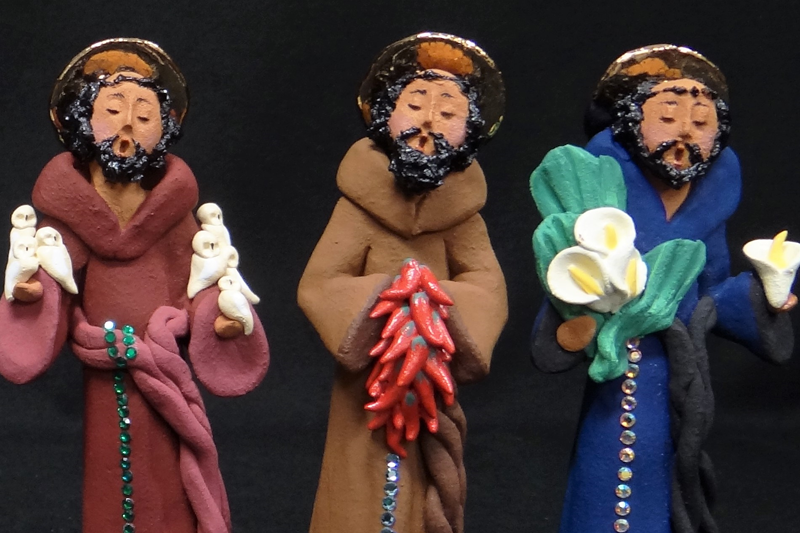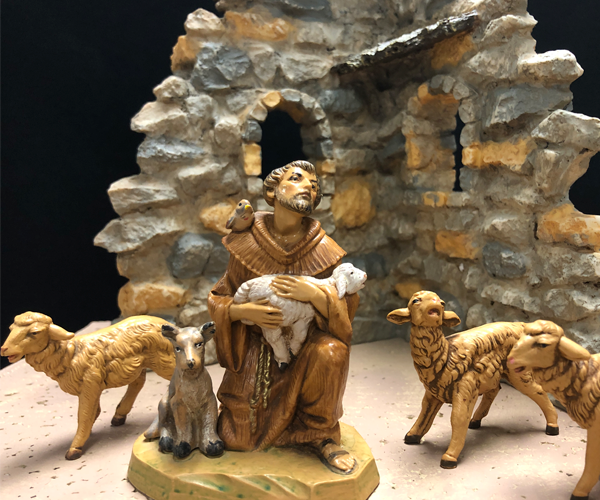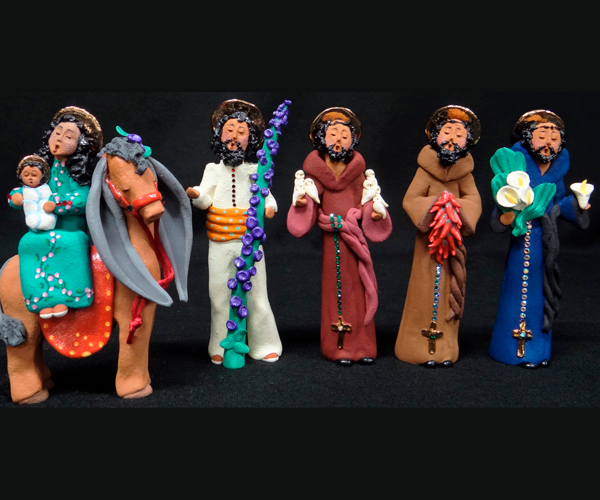Blogs

St. Francis, Pope Francis, Nativities, and the Natural World
By Bridget Retzloff
Eight hundred years ago, St. Francis of Assisi hosted the first living Nativity scene — a dramatization of the birth and infancy of Jesus Christ. We carry on that tradition by placing Nativity sets, or crèches, in our homes, churches and other public places. At the Marian Library, we share a selection of the Nativity sets in our collection in an exhibit each year during Advent and Christmas.
At the first Nativity scene in Greccio, Italy, in 1223, St. Francis and his friends arranged for animals and actors to portray the scene of Christ’s birth for a Christmas worship service. As priests, brothers and townspeople gathered for Mass, they found a manger full of hay with an ox and a donkey standing nearby. The celebration of the Eucharist before the manger demonstrated the connection between Christ’s birth and resurrection. One of the people present is said to have seen a miraculous vision of the infant Jesus lying in the manger.
Of this event, Pope Francis writes, “With the simplicity of that sign, Saint Francis carried out a great work of evangelization. His teaching touched the hearts of Christians and continues today to offer a simple yet authentic means of portraying the beauty of our faith” (2019).
Oct. 4 is the feast day of St. Francis, the patron saint of animals and ecology. He considered all of God’s creation to be part of his brotherhood and had a special connection with nature. St. Francis’ Canticle of the Sun expresses this relationship with praise:
Praised be You, my Lord, with all your creatures;
especially Brother Sun, who is the day, and through whom You give us light.
…
Praised be You, my Lord, through Sister Mother Earth,
who sustains us and governs us and who produces
varied fruits with colored flowers and herbs.
In 2015, Pope Francis published Laudato si’, his encyclical on ecology and care for our common home, the title of which is taken from a repeated phrase in the Canticle of the Sun — “Praise be to you.” Laudato si’ calls all people to respect and live in harmony with the natural world and encourages Catholics to connect their faith and ecology in order to develop solutions to environmental and social crises. Pope Francis writes,
I believe that Saint Francis is the example par excellence of care for the vulnerable and of an integral ecology lived out joyfully and authentically. He is the patron saint of all who study and work in the area of ecology, and he is also much loved by non-Christians. He was particularly concerned for God’s creation and for the poor and outcast. He loved, and was deeply loved for his joy, his generous self-giving, his open heartedness. He was a mystic and a pilgrim who lived in simplicity and in wonderful harmony with God, with others, with nature and with himself. He shows us just how inseparable the bond is between concern for nature, justice for the poor, commitment to society, and interior peace.
The Vatican is set to publish a follow-up document from Pope Francis this Wednesday, Oct. 4, titled Laudate Deum.
This year’s Christmas exhibit, Nativities and the Natural World, will celebrate the 800th anniversary of St. Francis’ first Nativity scene and connect St. Francis’ love of nature with Laudato si’ by featuring Nativity sets that include plants and animals from around the world and sets made from unique natural materials. We hope that the exhibit will inspire visitors to reflect on the splendor of nature and how we can care for each other and the environment in our common home.
— Bridget Retzloff is an assistant professor and the visual resources librarian for the Marian Library.
References


